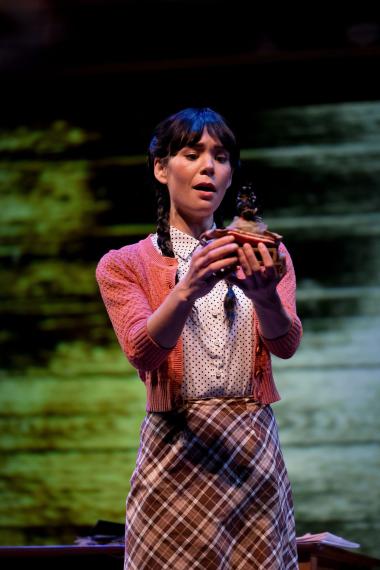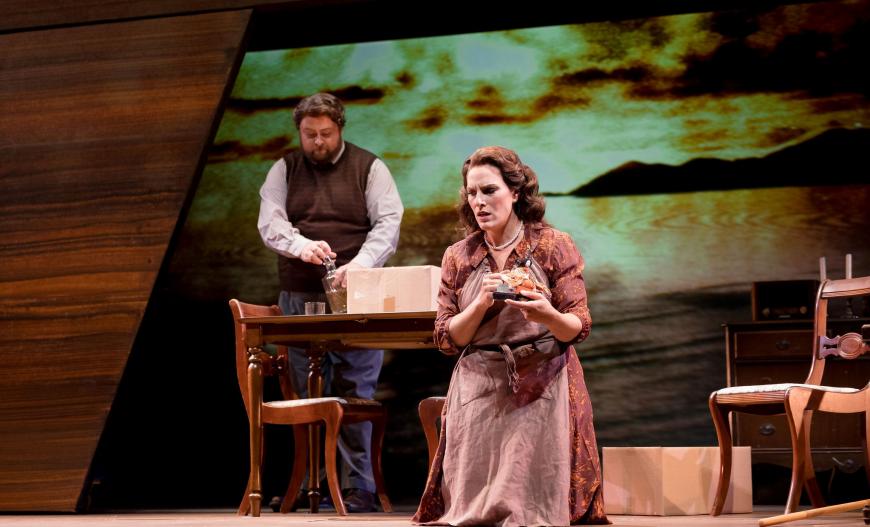
In the present era of Opera Santa Barbara, now 29 years old and under the leadership of the ambitious and multi-hat-donning Kostis Protopapas, diversity has become an important programming ethic. Fulfilling its intention of bringing a contemporary American work to each season’s roster, OSB turned to the moving and compact one-act opera An American Dream, composed by Jack Perla with a libretto by Jessica Murphy Moo, on Saturday at the Lobero Theatre.
Boldly informed by Perla’s elegiac and layered musical score, the opera takes on themes of displacement, fragile definitions of “home,” and the anxiety of life during wartime, with lingering social and racial imbalances adding to the mix.

Commissioned by Seattle Opera and premiered in 2015, An American Dream turns to a darker chapter in the nation’s history during World War II, and the “dream” factor arrives tinged with nightmarishness. Specifically, the work’s intertwining stories relate to the internment of Japanese Americans after the bombing of Pearl Harbor and the dubious acquisition of an imprisoned Puget Sound family’s home by a German Jewish woman, Eva (mezzo-soprano Audrey Babcock), and her conniving and quasi-racist American Christian husband, Jim (baritone Ben Lowe). Eva’s parents are left to their fate back in their Nazi-tormented home, which becomes a late-breaking turning point in the tale.
As a historical stage-setting device, OSB’s production opened with a video montage of testimonies from survivors of the internment, which involved 120,000 displaced people, with archival footage and newspaper headlines filling in the grim saga. Film footage of war’s carnage and the Puget Sound’s peaceable nature established further historical context via Yuki Izumihara’s scenic and projection design and Helena Kuukka’s poetic lighting design.
A central house/kitchen setting, with slanted lines to imply scale, Northwestern nature, and motion, was surprisingly effective in evoking a sense of place, critical to the questions of “home” in the opera. Later in the production, action shifted between the house and the spartan setting of an internment camp, dramatized by juxtaposition with the family’s former home. The talismanic prop of a doll, left behind by the Japanese American girl Setsuko and hidden by Eva from the sinister clutches of Jim, becomes a dramatic device leading to the climactic confrontation and resolution between the two women.
In the space of 70 minutes, An American Dream effectively transports us to a home in the Northwest imbued with tensions tied to xenophobia and wartime morality compromises.
Perla, whose musical palette has included aspects of jazz, minimalism, and shadows of well-placed dissonance, has drawn on his natural flexibility with musical idioms to create a captivating score, well suited to the text and the action of the narrative. Occasionally, and fittingly, echoes of Aaron Copland’s harmonic paint box and wisps of musical japonisme drift in as well.

All hands conspired to make this production work its particular emotional magic, especially the empathetic female leads. Dynamic young Australian and Angeleno soprano Janet Szepei Todd, making her OSB debut, potently embodied Setsuko with lithe vocal lines and focused nuance, effectively capturing the character’s idealism as it turns sour. As Eva, Babcock strongly expressed the inherent complexities of her role musically and dramatically, a wartime emigree torn between her desire for reunification with her parents and compassion for the former young resident of the house she now lives in.
Also impressive were Nina Yoshida Nelsen as Mama Hiroko Kobayashi and Paul Chwe MinChul An as Papa Makoto Kobayashi.
An American Dream vividly takes root in a shameful segment of American history on the West Coast but also grapples with deeper issues in a world given to conflict and flux. In the finale, repetitive phrases trigger thematic associations, culminating in the telling line “Home is just a place of shadows … where footsteps have no sound.”



